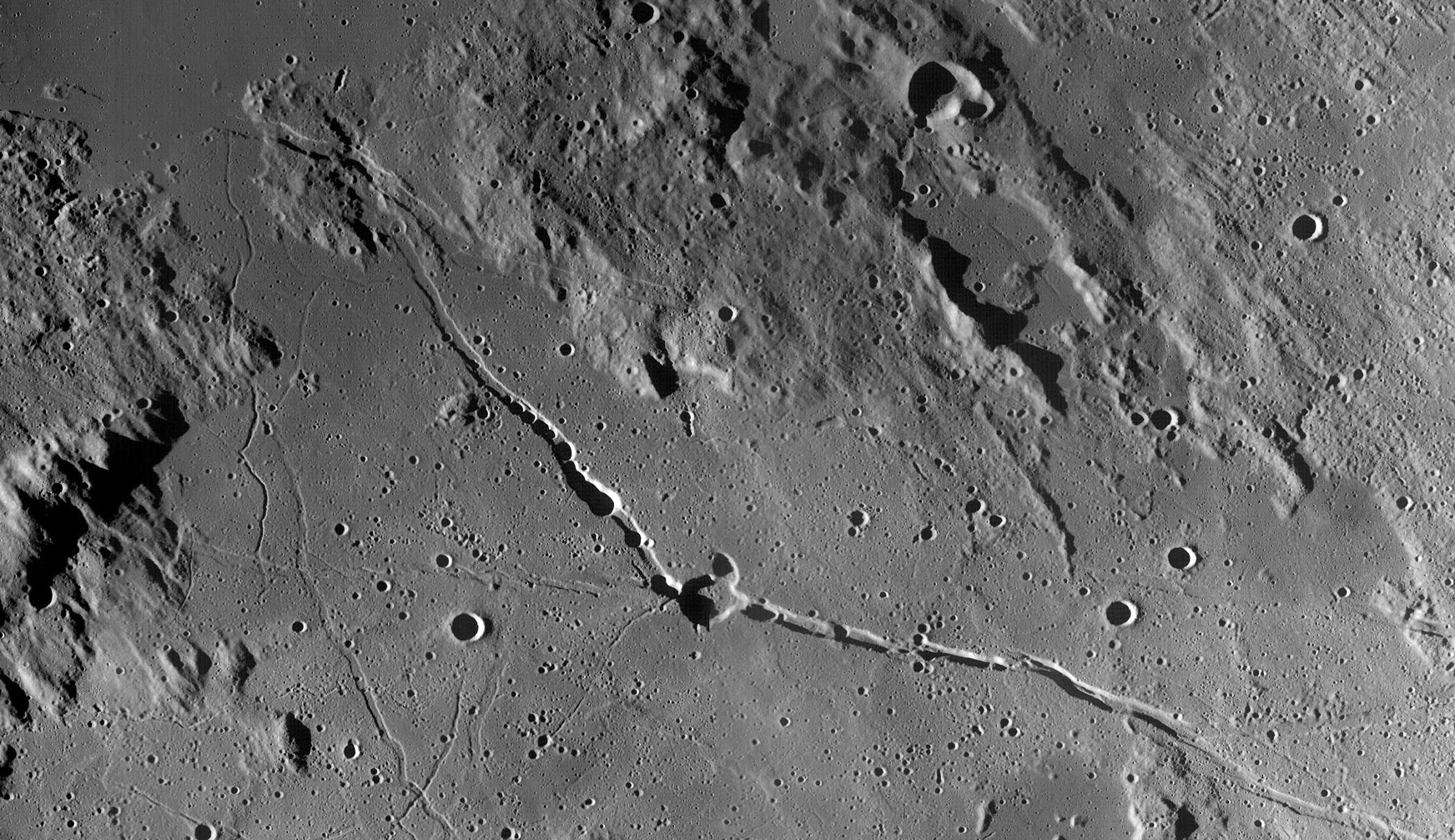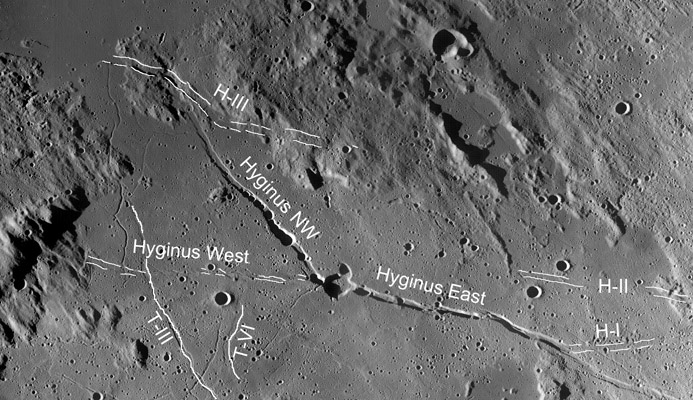Difference between revisions of "September 2, 2012"
| Line 19: | Line 19: | ||
</table> | </table> | ||
<br /> | <br /> | ||
| + | <p><b>Yesterday's LPOD:</b> [[September 1, 2012|The Moon Isn't Blue]] </p> | ||
| + | <p><b>Tomorrow's LPOD:</b> [[September 3, 2012|Not the Mare]] </p> | ||
<hr /> | <hr /> | ||
| − | |||
| − | |||
| − | |||
| − | |||
| − | |||
| − | |||
| − | |||
| − | |||
| − | |||
| − | |||
| − | |||
| − | |||
Revision as of 12:23, 7 February 2015
Rilles-A-Poppin

LRO WAC mosaic compiled and processed by Maurice Collins, New Zealand
 |
A recent good terrestrial view of the Hyginus area whets the appetite for more, and Maurice satisfies by compositing a new mosaic of Wide Angle Camera images from the Lunar Reconnaissance Orbiter. Many of the rilles seen here are visible on the Earth image, and all are seen in the higher Sun LRO QuickMap view, but everything is easier to see and more dramatic here. The Hyginus Rille with its two distinctive arms are the center of attention; for convenience I've labelled the arms Hyginus East and Hyginus NW. This image reveals a faint but definite continuation of Hyginus East to the west. Hyginus West has two short flat-floored graben near Hyginus crater, and a similar but broader graben further west. Between these two are a series of short en echelonsegments that are visually hinted at. An altimetry traverse across one part of this middle segment confirms the existence of a 2-3 km wide, 30 m deep trough. Additional flat-floor graben occur north of the Hyginus Rilles. Joining Hyginus East at a steep angle is a more degraded graben called Hyginus I in the System of Lunar Craters chart C4. North of that is a similar but fainter feature, here labelled Hyginus II, and a much longer and stronger graben, Hyginus III, roughly parallels the directions and bend of the main Hyginus Rille. In addition to these wide features is a complex family of Triesnecker related rilles, including the SLC-named Triesnecker III and VI rilles. Both the Triesnecker and Hyginus areas exhibit many more generations of rille-formation that previously recognized. Generally rilles and graben form in response to tension - a pulling apart of crust in directions opposite the direction of the rille. The fact that rilles trend E-W, N-S, and SE-NW indicate a complex and changing pattern of forces during the times the rilles formed
|
Yesterday's LPOD: The Moon Isn't Blue
Tomorrow's LPOD: Not the Mare



